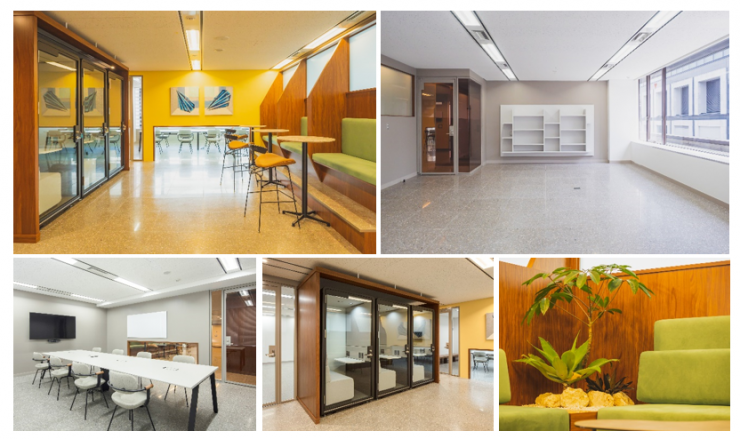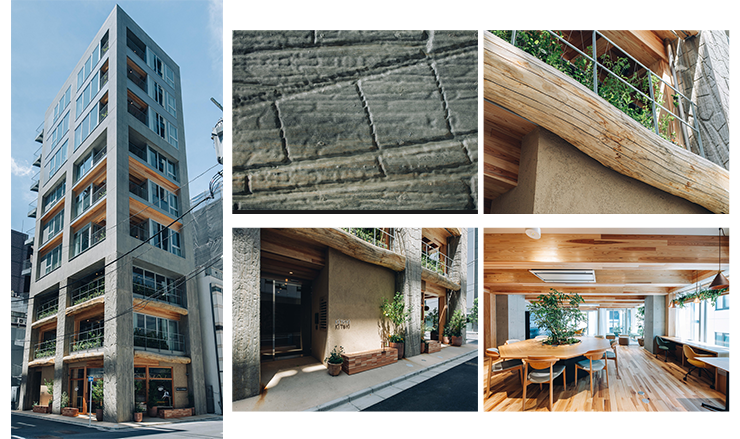Pollution
Basic Approach
We recognize the need to reduce and control the emission of environmental pollutants across the Group’s real estate portfolio and make an effort to reduce the use and emissions of harmful chemical and ozone-depleting substances in an effort to prevent pollution.
Pollutants emitted from business activities can adversely affect people involved in our business and the surrounding environment. In recognition of this impact, we will strive to prevent pollution.
Initiative Targets
The Heiwa Real Estate Group has established procurement policies for mainstay Group products, services, and major business partners (property management companies and building management companies), introducing operational procedures and procuring materials that meet ESG-related standards, including the reduction of environmental pollutants.
Process targets
The Group carefully considers its impact on the global environment and complies with environmental laws and regulations by controlling waste emissions, including hazardous substances, and thoroughly implementing countermeasures to prevent soil, air and water pollution and the use of asbestos in Group business.
Based on our Sustainable Procurement Policy, we strive to reduce environmental pollutants, including the use and emission of hazardous chemicals and ozone-depleting substances, as one criterion for selecting products and services for procurement. We also select and evaluate business partners (suppliers).
The Group targets a 20% reduction in hazardous waste and other emissions by FY2030. To this end, targets are set each fiscal year and results are confirmed to promote the reduction of hazardous waste and control environmental pollution.
Specific Initiatives
Asbestos countermeasures
We conduct property surveys to determine whether building materials containing asbestos have been used, based upon which we make regular reports regarding removal efforts and response policies.
Appropriate handling of PCBs
We conduct periodic surveys on the presence or absence of equipment containing PCBs and make regular reports on disposal costs and related issues.
Appropriate handling of chlorofluorocarbons
We also conduct periodic surveys on the amount of chlorofluorocarbon (CFC) emissions at each property in an effort to reduce pollutants within business activities.
Waste and Resource Usage Initiatives
Basic Approach
The Heiwa Real Estate Group recognizes that efforts to reduce adverse impacts on the environment, such as maintaining an appropriate awareness of how much waste is emitted and reduced, efforts to efficiently utilize and conserve resources without waste, and adverse impacts on ecosystems, are all issues we must address as a company.
Further, we strive to realize a recycling-oriented society by reducing building lifecycle costs through efforts to reduce (waste emissions), reuse and recycle at all our properties.
Based on this understanding and the above policies, the Heiwa Real Estate Group strives to reduce waste emissions and utilize resources efficiently.
Initiative Targets
In our aim to reduce waste emissions, the Sustainability Committee, chaired by the Representative Executive Officer, President and CEO, compares actual results each fiscal year with consumption volumes and output in one or several previous fiscal years.
Heiwa Real Estate targets a 20% reduction in waste emissions by FY2030 (compared to FY2018).
Notes:
- Recycled waste is excluded from the actual figures for waste and waste emissions per square meter.
- In accordance with the usage classification as defined by the SASB, the targets shall apply respectively to each type of properties (office/retail/residential/recreational and lodging/multi-functional).
- Target includes the head office and branch buildings owned by the Group.
Results
ESG Data
Specific Initiatives
Reuse of waste materials in company properties
The flexible office XPORT, a Group property aimed at providing a sustainable office environment, efforts to reduce waste including the use of terrazzo tile flooring, a natural stone material derived from waste materials.

Constructing the first flexible office XPORT Nihonbashi Kabutocho
Wooden hybrid structure KITOKI initiatives
This 10-floor retail and office building adopts a hybrid structure that includes three-floor mega-structures constructed using SRC frames, with each floor within the mega-structures made of wood. This is the first project on which the Company adopted a hybrid structure.
The combination of SRC mega-structures and fire-resistant wooden structures has been praised for opening up new possibilities in terms of construction methods and user benefits when utilizing wood in high-rise buildings, as well as extending the building lifecycle. This project was selected for the Leading Projects Program for Sustainable Buildings (wood-based structures) in FY2020 implemented by the Ministry of Land, Infrastructure, Transport and Tourism (MLIT), which aims to drive technological advancement and raise public awareness related to wooden structures.
Outside the building, we plan to install benches made of wood from the Tokyo Stock Exchange (TSE) Listing Forest* located, in the Yashima district of Yurihonjo, Akita Prefecture, based on a social contribution program being run by the Japan Exchange Group, Inc. (JPX). The wood, called kabulock, can be used in a multitude of applications, and will be processed into benches.The expectation is that this hybrid structure will convey the sense of warmth unique to wood to everyone who works in, visits, or lives near the building, while adding a touch of tranquility to the area (acquired certificate for carbon dioxide fixation promoting the use of wood produced in Akita Prefecture).
Heiwa Real Estate empathizes with and supports JPX TSE Listing Forest conservation activities, and will contribute to the effective recycling of forest resources in Japan through the Wood Project, promoting the reuse of wood in building materials, benches and other purposes.
We are using cedar on top of concrete frames for the exterior design to create a wood-like feel while retaining durability. Rather than dispose of wood when it is time for replacement, which is typical for cedar due to its grain and knots, it will instead be reused for benches and in other applications. Heiwa Real Estate aims to implement a circular economy in projects that contribute to a recycling-oriented society.
* In June 2004, the Japan Exchange Group (JPX), set aside an area of approximately 5 hectares (now expanded to approximately 7.3 hectares) in the Yashima district of Yurihonjo, Akita Prefecture, as the “TSE Listing Forest," where it engages in forest conservation activities in the hope that the exchange market will grow and prosper in line with the growth of the forest.

Deciding on new wooden hybrid structure project KITOKI Building name and overview of interior design
Cooperation with business partners
Establishing tenant guidelines
We established the Tenant Guidelines for Environmental Concerns as part of our waste management efforts, calling on the Group and all its business partners to cooperate on this initiative.
Excerpt from Tenant Guidelines for Environmental Concerns
- Ensure that everyone working at a building understands the rules about recycling and trash separation there.
- Install recycling bins in various office spaces.
- Personal tumblers and mugs should be used where possible to reduce plastic bottle and paper cup garbage.
- Be active in purchasing recycled stationery and other supplies.
- While a number of municipalities treat paper waste from homes as burnable waste, these can be used as recyclable resources at offices.